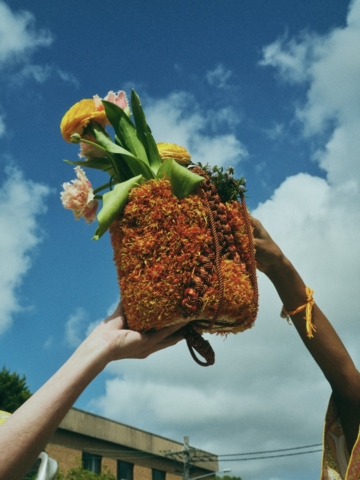The Tender Kimono, Wrapped in Love
By Jo Phillips
You may well have heard the word Kimono, and you may well know it’s a style of wrap from Japan, but did you know its meaning was ‘the thing to wear’? Worn by commoners initially, and as undergarments for aristocracy in the 16th century onwards. However, the term kimono wasn’t first adopted until the mid-19th century. His is a little of the history and it’s an enduring symbol of traditional Japanese culture. Find out more here in The Tender Kimono, Wrapped in Love.
By Nicola Wall and Hiroko Yamauchi @nikaya_kimonocult
Made from the softest silks, for the aristocracy, elegant with meaningful motifs and symbolic prints and colours. These beautifully crafted items can be extremely valuable. There is great tradition and tender loving care behind what started out as something quite utilitarian.
Wrapped over the body from left to right and held in place with a belt known as an obi The feel of the kimono fabric, care and handling, the emotional connection and the artistry and craftsmanship that goes into the overall making of the kimono.
Traditionally a Kimono is made from high-quality materials like silk which often has a tender, soft feel against the skin, enhancing the wearer’s comfort and experience.
One silkworm cocoon produces 1000 metres of silk, to become 1500m of thread with a wapping 2700 cocoons are needed to make one kimono. After all, it’s just as important for something to feel as great as it looks. Hence making the purchase all the more exciting, luxurious and unique to the individual buyer. Silk is breathable, UV resistant, bactericidal, moisturising, and heat retaining.
Nicola Wall is the woman behind Nikaya_Kimono Kult a site where she not only sells vintage robes but also shows modern and expressive ways to wear them. She tells .Cent
If you are to purchase a kimono from Kimono Kult, we want the customer to know that the one they are buying is the one for them, the right colour, fabric, and feel, enhancing the wearer’s comfort and experience.
They need to be made aware of how to care for their Kimono. The chosen one, the special one, the one they will keep forever and cherish knowing that it has connotations of tenderness all the way through.
From the first glance of the selection to the feel when they first try it on. The whole experience.
Kimono traditional garments need gentle handling, careful storage and delicate cleaning to preserve their beauty and integrity. I’ve often got great pleasure watching someone try on a Kimono Kult Kimono, of which I have selected and hand-picked from Tokyo for a curated collection.
The first time they try on they fall in love with the feel and quality and they emerge into a feeling and a story that possibly they have no idea about the journey of that one they have chosen and where it may have come from many steeped in history.
There is a Kimono for everyone they will know as soon as they choose and try it on. It’s important to allow the customer to peruse and pick where the energy takes them and usually once they have chosen and tried on and felt the whole experience they know it’s the piece for them. You can see the experience they are feeling and it’s a tender moment where they have found the piece that they have fallen in love with ready to be treated tenderly and adored like a family heirloom.
Kimonos hold an emotional connection and often have sentimental value being passed down through generations or worn during specific life events for example in Japan when a girl turns 20, she has a coming-of-age ceremony and the Furisode, a family heirloom is passed down from grandmother to mother to daughter over generations of parents and children. After the coming-of-age ceremony, single women can wear kimonos to attend the weddings of their acquaintances.
A man’s Haori is rather special as they have a unique sense of beauty and subtlety as the intricate detail is hidden in the inner part of the garment not on the outside.
The government of the Edo period didn’t allow people to have luxurious lives, but the people wanted to represent their commitments and wills so the inside of a man’s Haori or kimono is more beautiful and detailed in design and pattern than on the outside. A subtle way of showing beauty in a typically understated way. Here are some examples of this.
We must also make a point of the Artistry and craftsmanship, the meticulous and tender craftsmanship involved in making kimono from the dyeing of the fabric to intricate embroidery, which showcases the delicate and detailed work that goes into creating each piece. Certain kimono patterns can evoke a sense of tenderness through their designs and the cultural meanings attached to them for example.
Sakura (cherry blossoms) season they are a symbol of fleeting beauty and the delicate nature of life. Their soft pastel hues and graceful Petals can represent tenderness and gentle beauty.
Tsubaki (Camellias) These flowers are symbols of love and affection in Japanese culture. Their lush, rounded petals and vibrant colours can convey warmth and tenderness.
Momiji (Maple Leaves) The soft, warm colours of autumn maple leaves can evoke feelings of warmth and tenderness reflecting the gentle transition of seasons.
Many of these kimono patterns often rendered in soft harmonious colours can imbue a kimono with a gentle, tender aesthetic, making them particularly suitable for occasions that celebrate love, beauty and all aspects of life.
At Kimono Kult I believe there is a Kimono for everyone and every occasion. It’s a personal choice and one that should evoke a feeling of tenderness within. I usually see it on the customer’s face as an expression of joy when trying on and purchasing a kimono which once purchased is a kimono for life.
Cherish that tender moment and feeling every time you wear it, for an occasion in any way you feel. Choose how to wear yours in any environment, location or setting. Kimono Kult believes you can wear it many ways, and be creative with your kimono. Join the Kimono Kult.
To find out everything you want to know and to find ones to buy please visit the Instagram site @nikaya_kimonocult. Website coming shortly
If you enjoyed reading The Tender Kimono, Wrapped in Love then why not read Whispering Silk here
.Cent Magazine London, Be Inspired, Get Involved










